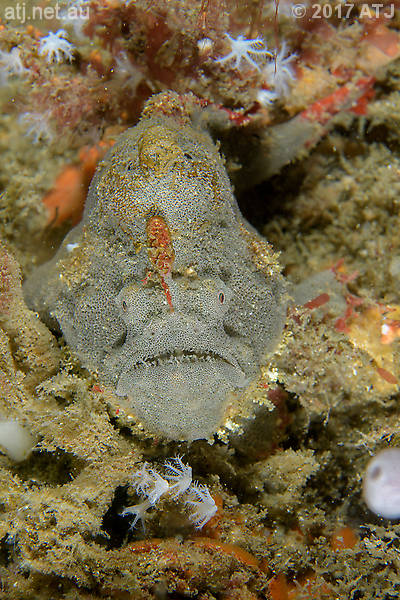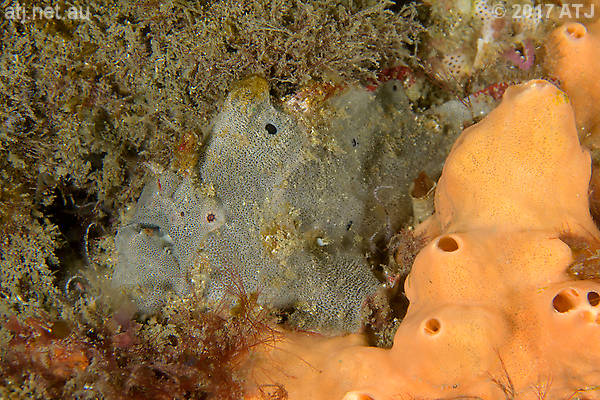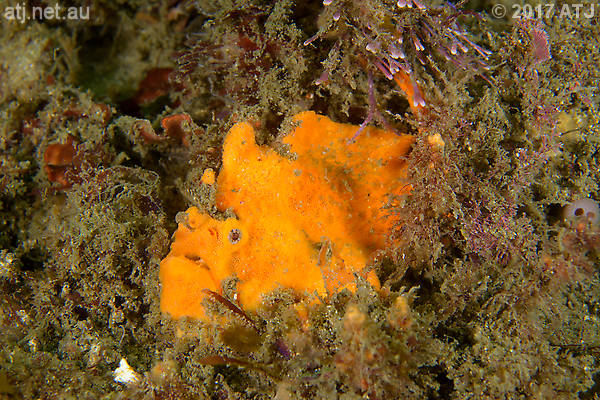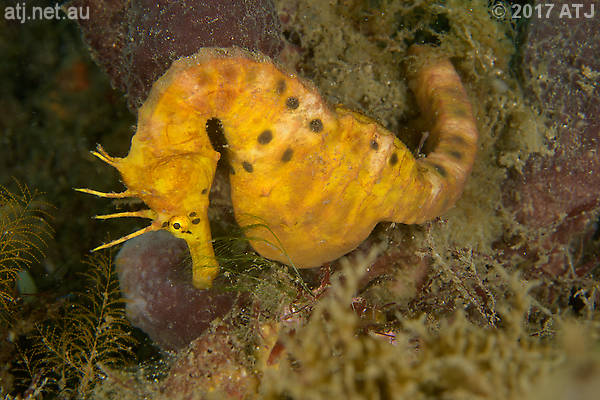Dive Details
Location
Date
Saturday 28 October 2017
Time
11:09am - 12:42pm
Buddy
Mike Scotland
Seas
Surgy
Visibility
3 to 5 metres
Duration
93 minutes
Surface interval
Maximum depth
12.4 m
Average depth
9.7 m
Water temperature
17.9°C
Dive Profile from Citizen Hyper Aqualand

Tides at Botany Bay AEDT
Note that tides at dive site may vary from above location.
High
3:11am
1.16m
Low
8:40am
0.76m
High
3:10pm
1.42m
Low
10:10pm
0.57m
Details
Another dive at The Monument to see the pot-bellied seahorse, "Sunshine", again. We'd start from the little bay to the south-east of the point and make our way to the point and around to the seahorse.
We waded out through the rocks and met on the surface. We then descended and headed out towards the reef. Mike veered right and my left so we were immediately seperated. I ended up near Seahorse Rock. Visibility was only around 3 metres, it was around 18°C and there was quite a bit of surge. I looked for the seahorses, the spindle cowries and little dragonfish. I found none of these but did check out the Dendronephthya soft coral colony near Seahorse Rock for one of the spindle cowries. Dave Harasti is looking at whether the colonies around Sydney are the same species as in Port Stephens and what the conservation status should be. It was believed they were extinct from the Sydney area. I was on the lookout for colonies.
I then headed down the reef to the start of the wall to the little orange painted angler. I met up with Mike there and pointed out the angler. I took some photos and video of the angler before looking for pygmies on the adjacent rock. I couldn't find any pygmies.
We swam down to Carijoa Rock and Mike pointed out a male weedy seadragon with eggs. He then pointed out a grey red-fingered angler on Carijoa Rock. I couldn't find any pygmies on the rock.
We headed up to Slope Rock. I found Dama's red male pygmy pipehorse. The surge made photography very difficult. I showed the pygmy to Mike. I then found the male pygmy I'd found on Thursday and pointed it out to Mike.
I left Mike at the second pygmy and continued slowly along the reef thinking he'd catch up. I looked around Split Rock for seahorses and noticed a <>Dendronephthya colony. I took a sample for Dave and bagged it up.
I then swam along the reef looking for the well camouflaged white red-fingered angler I'd seen on Thursday. I made a few passes and couldn't find it. I swam back to Split Rock and started looking again. I found it much closer to Split Rock than I had remembered. I took some photos which was difficult due to the surge. I noticed something moving on the angler but didn't look all that closely thinking it was just the lure (which in hindsight would have been cool).
I went back to look for Mike but couldn't find him. I continued on towards Four Pygmy Rock to look for the grey red-fingered anglerfish I'd found on Thursday. I couldn't remember where the rock was but I knew I'd recognise the rock. I couldn't find the rock. I did find a fairly large colony of Dendronephthya and took another sample for Dave.
Mike swam up. He'd gone to Seahorse Rock before coming back to the reef. I took him back to the well camouflaged angler. I was surprised by how long he was taking photographs of the anglerfish.
Mike caught up to me again and we continued on. Just past Four Pygmy Rock I found the grey angler from Thursday. The rock was a lot closer to the sand line than I remembered.
I was starting to get low on air so we had to move quickly if we were to get to the seahorse. We headed up the reef and over the wall over the sand to the other wall. Just before the start of the wall I spotted an orange red-fingered angler in the brown algae.
We swam across the sand below the wall. Mike was with me but veered off closer to the wall and I lost him just before I came on the rock where the seahorse had been. "Sunshine" wasn't on the white honeycomb sponge but as I looked around the rock I saw her on the red chimney sponge on the other side of the rock. After taking some photographs and shooting some video I had a quick look around the area for other seahorses.
I headed for the wall. I ascended it and started my safety stop as I headed along the top of the wall. I veered to the south and stayed at 5 metres as long as I could before swimming up over the kelp and heading south. I kept going until it got to shallow and then I waded to the rocks in front of the flagpoles.
Postscript: When Mike joined me back at the cars he told me there had been a white pygmy pipehorse on the white red-fingered anglerfish. I had missed it completely.
Camera gear
Camera
Nikon D500
Lens
Nikon AF-S Micro Nikkor 60mm f/2.8G ED
Housing
Ikelite 6812.5
Lens port
Ikelite Flat Port 5502.41
Strobe(s)
2 x Ikelite SubStrobe DS161
Photographs
Depth information, where present, indicates the depth of the camera when the photograph was taken and can be used to approximate the depth of the subject.

Painted anglerfish, Antennarius pictus. 10.3 m.

Red-fingered angler, Porophryne erythrodactylus. 11.7 m.

Red-fingered angler, Porophryne erythrodactylus. 11.4 m.

Red-fingered angler, Porophryne erythrodactylus. 11.7 m.

Red-fingered angler, Porophryne erythrodactylus. 8.6 m.

Female pot-bellied seahorse, Hippocampus abdominalis, ("Sunshine"). 10.8 m.